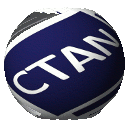Directory support/pdfrack
README
**********************************************************************
pdfrack = a hack for using psfrag and pdflatex
By Marc Boyer-Gandon
(Marc.Boyer@onera.fr)
**********************************************************************
pdfrack is a hack designed to help the psfrag users to be able to
compile their documents with pdflatex.
It should not be considered as a "solution" for using psfrag and
pdftex, but as a "hack" developed for my personal use that can save
your time also.
Please, register yourself by sending me an email with [pdfrack] in the
subject if you use it.
Do not hesitate to send me an email to ask for improvements or to
report bugs. I will fix it if I can (but I am not at all a (La)TeX
wizard).
---------------------
Changes
---------------------
Version: 1.0:
- No new feature, but stable for month, and a better documentation.
Version: 0.5.1:
- Better documentation of the -a option.
Version: 0.5:
- Add of the auto (-a) option
Version: 0.4.1:
User Changes:
- More files in testFile directory
- Removing some useless -xv at first line
- Fixing the noclobber bug of bash
- removing also .thm and .out files created by ntheorem
Version: 0.4:
User Changes:
- Add of the -M option, to handle \input, \include...
- Better documentation
Version: 0.3.2.2:
User Changes:
- Better documentation
Version: 0.3.2.1:
Implementation changes:
- respect of the recommandations from "LaTeX2e for class and package writers"
Version: 0.3.2:
User Changes:
- add of the 'header option'
Version: 0.3.1.1:
Bug fixed:
- a minor bug in test "testDoubleImage.tex" fixed
Version: 0.3.1:
User Changes:
- Minor messages changes
- automatic use of ps2eps if installed
Version: 0.2
User Changes:
- This version should allow you to put several pictures (with
includegraphics) in a single figure environment.
- Added the -p -e and -k options
Implementation changes:
- Added a function "compileOneFigure()"
- Use of mktemp (if possible)
---------------------
Table of Contents
---------------------
I. What does it do ?
II. How to use it ?
III. What is required ?
IV. Why this name ?
V. How to improve it ?
VI. Temporary files
VII. Bugs
I. What does it do ?
--------------------
The main idea of the script is to scan your source file to find the
figures included (with \includegraphics) and, for each figure, to make
a single latex file with only the figure and to generate a pdf figure
that takes into account the psfrag replacements.
Then, using pdflatex, you just include the pdf figure, with the psfrag
replacements.
II. How to use it ?
-------------------
They are two ways to use it: the lazy automatic one (option -a), where
all figures founds are converted, and the hand-made one, where you
have to select the figures to be converted with the script.
a) Installing it
Put the script pdfrack.sh in a directory included in your path, and
pdfrack.sty somewhere where TeX will find it.
b) Your latex source files
The pictures that you want to translate must be between two lines
\begin{figure}
\end{figure}
and included with command \includegraphics.
If you chose the lazy automatic option, do nothing.
If you chose to select the figures to be translated, just
i) include the package pdfrack.sty
ii) replace \includegraphics by \pdfrackincludegraphics for all the
figures you want to translate.
c) Running the script pdfrack.sh
Then, you should run the script pdfrack.sh on your latex source
file. It will generates the figures in pdf format.
It sometimes fails :-( There could be two reasons:
- the translation from dvi to pdf fails, you should try
to put options -p and/or -e, and options -m n, with n in
0..3 ; but that is not my job :-)
- the generated latex code is wrong, and this is my fault,
you can fix the script or email me
Note that the '%' is is general seen as a comment, even if prefixed
with \. So, avoid to use it.
If your LaTeX code is too complex (if your figures environments are in
included files for example), then, pdfrack will ne be able to handle
it. Then, you should write a simpler LaTeX file, with your figure(s)
and use this file to generate the pdf figures.
d) Running pdflatex
Then, you could run pdflatex on your file.
III. What is required ?
-----------------------
The pdfrack.sh script uses a lot of other scripts and software.
cut, dvips, epstopdf, grep, head, latex, ps2ps, ps2epsi, sort,
tail, and, first of all, a bourne shell...
Sorry for Win* users. They should install solutions like Cygwin,
or try a Linux distribution.
IV. Why this name ?
-------------------
I think a good solution for using pdflatex and psfrag should be named
"pdfrag" or "pdffrag". I do not think that my solution is good. It is
just a hack. Then pdfrack comes from:
pdf
+ psfrag
+ hack
---------
pdfrack
V. How to improve it ?
----------------------
You can change the code for your own purpose, and email me your
improvement if you think it could help someone else.
You can ask me some improvements, and I will try to do it.
VI. Why to use it ?
-------------------
They are several other solutions (see the full documentation). This
package tries to be simple. In run only on bash-based systems (Unix,
Linux, MacOS).
VII. Bugs
---------
It seems that there are troubles when using draftcopy and pdfdraftcopy...
Download the contents of this package in one zip archive (286.4k).
PDFrack – Use psfrag with pdfLaTeX
PDFrack is a package that requires a Unix system.
It works by scanning your source file and extracting each figure it contains to a separate LaTeX file. Each figure is then separately processed to PDF, which is read by pdfLaTeX on a later run.
The author still considers the package experimental.
| Package | PDFrack |
| Version | 1.0 |
| Maintainer | Marc Boyer |
| Topics | Graphics text Graphics EPS/PDF |
